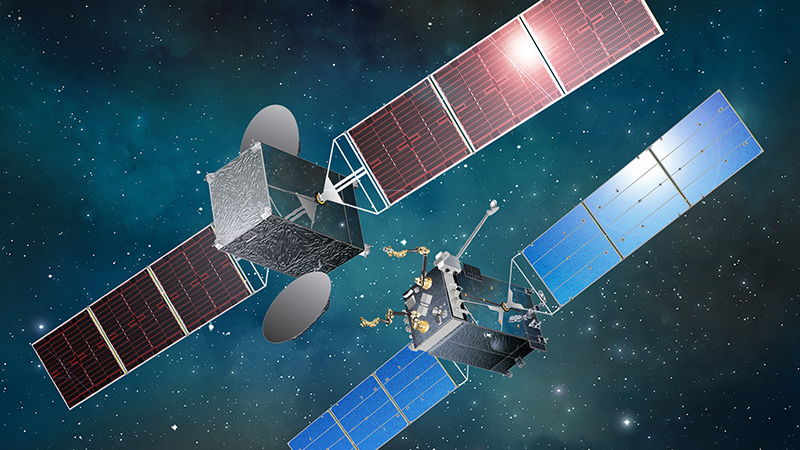Stay Up to Date
Submit your email address to receive the latest industry and Aerospace America news.
The Communications Systems Technical Committee is working to advance communications systems research and applications.
The January death of Harold Rosen, inventor of the first geosynchronous orbit communications satellite and co-recipient of the first AIAA Aerospace Communications Award, was, in retrospect, a harbinger of increasing industry disruption and transformation, which dampened conventional industry commerce during the year. The communications satellite industry faced greater overcapacity and pricing pressures in many markets with a consequential deepening of last year’s downturn in service operators’ revenue and GSO satellite orders.
Hughes, ViaSat, Intelsat and NBN Co. launched five high-throughput satellites between October 2016 and August 2017. Hughes and ViaSat continued development of their third-generation Ultra HTS GSO systems, while increased venture and other “New Space” investments funded the development of more than a half-dozen non-GSO HTS megaconstellations. These include low Earth orbit megaconstellations by Boeing, Hongyun, LeoSat, OneWeb, SpaceX and Telesat — each with between 108 and 4,425 satellites — and seven second-generation SES/O3b medium Earth orbit satellites, which collectively promise to add more than 40 terabits per second of capacity by 2025, according to a Euroconsult study published in June.
Through mid-September, seven GSO communications satellites were awarded, including awards by Indonesia and Thailand — the first by countries with established satellite industries — to the China Great Wall Industry Corp.; Inmarsat’s Global Xpress 5 HTS award to Thales Alenia Space; and the Hughes’ Jupiter 3 EchoStar XXIV ultra-high-density satellite to Space Systems Loral. This award pace suggested 10 satellite awards by year’s end, an almost 30 percent decline from the 14 awards in 2016, which had a more than 40 percent decline from the average of slightly over 24 awards during each of the four preceding years.
The commercial downturn was exacerbated by the winding down of the Department of Defense’s military communications satellite constellation upgrades. Although the U.S. Air Force in January convened an analysis of alternatives — between procuring military wideband satellites and using commercial broadband satellites — to meet the military’s increasing bandwidth needs, no new military communications satellite programs are underway.
SpaceX and Blue Origin continued the race to develop reusable launch vehicles to dramatically lower space access costs. France’s CNES and the Indian Space Research Organization signed a cooperative agreement in January to develop reusable launch vehicles.
After its September 2016 launch pad explosion, SpaceX’s Falcon 9 returned to flight in January, achieving 13 consecutive launches, including 10 first/booster stage recoveries as of mid-September. Nine additional launches were scheduled over the remainder of 2017, while Falcon Heavy’s first flight was planned for November. Blue Origin’s New Glenn, like Falcon 9, features a reusable first/booster stage and is under development for first flight before 2020.
Use of electric and hybrid electric/chemical propulsion increased in 2017 and is expected to be incorporated in more than half of new communications satellites by 2020, facilitating more cost-saving dual-launches and greater satellite capacities.
For new technologies and systems, Space Systems Loral established Space Infrastructure Services to commercialize its on-orbit satellite servicing capabilities and in June announced SES as its first customer. The Chinese announced in June that they set a record demonstrating quantum entanglement encrypted satellite communications.
Three companies — Swiss startup Astrocast, Israeli startup Sky and Space Global, and Amsterdam-based Magnitude Space — each plan to use between 18 and 200 cubesats to facilitate “internet of things” communications.
Despite these advances, the industry remains challenged with identifying new, emerging markets (e.g., 4K/8K ultra-high-definition over-the-top video, internet of things and 5G communications) for sustained, higher demand as well as developing technologies and systems necessary to meet but not oversupply this increased demand.
Contributors: Chris Hoeber and Roger Rusch
Related Posts
Stay Up to Date
Submit your email address to receive the latest industry and Aerospace America news.




